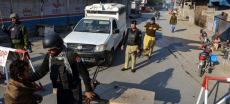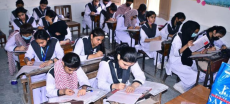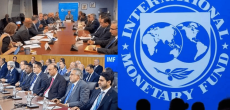[vc_row][vc_column][vc_column_text dp_text_size=”size-4″]”HOW can we get rid of the gaps that separate us?” We thanked him and got up to leave when Master Aftab (not his real name) questioned us. He had shown us around his home and introduced us to other people who lived there. This was a component of our investigation into the real-world encounters with rural lower, central, and upper Sindh and its desert regions’ unschooled youngsters.
The devastation brought on by the 2010 floods had resulted in the residents of Master Aftab’s community losing control of their land. They were still attempting to understand the implications and make sense of their lives and livelihoods when we first visited them in early August 2022.
Families in their entirety, including children, were toiling away on property that they no longer owned in exchange for a meagre share of the crops they helped to gather. They yearned fervently for access to medical care and clean water. It took two hours of hiking to get to a free school for the few kids from his village who were still attending.
Even when we attempted to summarise the differences Master Aftab noticed between us, we stumbled. He and the other residents, especially the women, had the same opinions that their lack of (formal) education throughout their life was the reason their manners or vocations weren’t good enough or valuable.
They felt that they were not doing enough to overcome the unbending structural barriers that were keeping their children from receiving even the most fundamental education. They also identified as being unenlightened, which makes us confront prevailing narratives that devalue alternative forms of knowledge and elevate formal schooling as a source of enlightenment.
However, whenever the subject of out-of-school children is brought up in Pakistan, the conversation tends to centre on the necessity of putting mechanisms in place to persuade parents of the importance of education.
It is important to consider why more rural Sindh children are not in school than are really enrolled. According to the Pakistan Social and Living Standards Measurement Survey, 2019–20, the education system does not reach or retain seven out of ten females and five out of ten boys between the ages of five and sixteen.
The available information is insufficient to completely comprehend the various aspects of rural children’s exclusion from formal schooling. This includes the effects of living in rural or isolated areas, being a member of a lower caste or a member of a minority faith, and the interactions between gender and poverty as well as the impact of being a member of linguistic minority communities.
However, children’s needs are not satisfied even when they are enrolled in school. Around 90% of Sindh’s public school buildings, according to the Annual Profile for Government Schools, 2019, only offer education up to the elementary level; relatively few provide the option to continue on to higher education levels. Alternative routes that might make up for people’ lack of access after the primary grades do not exist.
Primary schools frequently fail to meet students’ learning needs, too. The Annual Profile for Government Schools, 2019, found that nearly 89 percent of Sindh’s public primary schools have two rooms or fewer. To meet the learning needs of children in five grades in two rooms or less, many schools must use multi-grade teaching.
[/vc_column_text][/vc_column][/vc_row]











